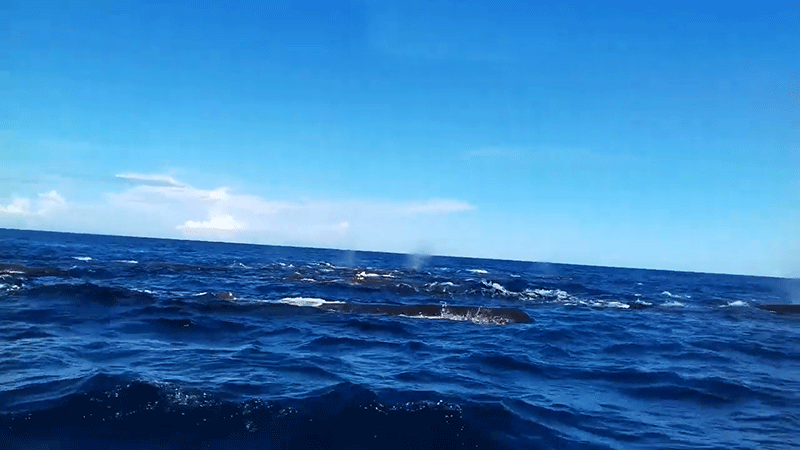Proposal to change the sea route to save Sri Lanka blue whales
Sri Lanka blue whales are an important natural asset to the world. Not only that, the resident blue whales in the sea off the south coast bring a lot of foreign currency to the island. Cities like Mirissa on the south coast are very popular for whale-watching tours in Sri Lanka. A large number of travellers embark on whale-watching tours from Mirissa harbour and it is one of the most popular activities on the south coast. Today a large number of people are engaged in organizing whale-watching tours. Therefore, protecting whales and their habitat is very important to the island as well.
Table of Contents
- Sri Lanka blue whales affected by ships
- Importance of Sri Lanka blue whales
- How to save Sri Lanka blue whales?
The Ocean of Sri Lanka is located in the centre of one of the world’s most active and significant sea routes in the world, which poses a great threat to the Sri Lanka blue whales. The East-West marine delivery highway, one of the most active and significant sea routes, is found exactly 12 nautical miles from Dondra Head, in the south of Sri Lanka. Roughly, about 40,000 passenger and cargo ships travel along this route every year, passing Sri Lanka.
The International Maritime Organization or IMO has proposed to Sri Lanka to reroute the sea route further away from the island. In a report presented to Sri Lanka in April 2023, the International Maritime Organization has proposed to move the sea route from Dondra Head by another 15 nautical miles.
Sri Lanka blue whales affected by ships
The proposal by IMO was suggested to Sri Lanka to change the sea route in view of protecting blue whales living in the southern Sri Lankan sea. Many marine environment groups have proposed to IMO to change the sea route due to the large concentration of blue whales in the sea off the south coast. The report was a result of a comprehensive study in 2012.
As per the IMO, the report uncovered that the current transportation path is found solidly in the centre of an area habitually visited by blue whales, which can harm the blue whales. International Marine Environment Groups point out that blue whales are facing a great threat due to the large vessels going on this route. Every year a large number of animals are dying and many others get wounded due to the collision with ships. Therefore, the busy sea route should be diverted to save this endangered species.
Importance of Sri Lanka blue whales
Sri Lanka blue whales are an important natural asset to the world. Not only that, the resident blue whales in the sea off the south coast bring a lot of foreign currency to the island. Cities like Mirissa on the south coast are very popular for whale-watching tours in Sri Lanka. A large number of travellers embark on whale-watching tours from Mirissa harbour and it is one of the most popular activities on the south coast. Today a large number of people are engaged in organizing whale-watching tours. Therefore, protecting whales and their habitat is very important to the island as well.
The death of three blue whales was utilized as a contextual analysis in the 2012 report that was delivered to the IMO. The report guaranteed that these blue whales had died in the oceans near the Colombo Port and the Southern oceans of Sri Lanka.
How to save Sri Lanka blue whales?
The report that was handed over to the IMO proposed to reroute the delivery path, referring to that not only the blue whales collide with large ships but also the small fishing boats. Assuming that this proposal is implemented, the sea route off the south coast beach will be rerouted to 15 nautical miles from the southern tip of Sri Lanka. The new delivery path will then be found 76 nautical miles from Colombo, 25.6 nautical miles from Galle, and 26.9 nautical miles from the Hambantota Port.
Recently, Sri Lanka’s Foreign Ministry, and the National Aquatic Resources Research and Development Agency or NARA held several rounds of discussions on this proposal. The National Aquatic Resources Research and Development Agency had apparently contradicted the proposal to reroute the transportation path.
The National Aquatic Resources Research and Development Agency sees that rerouting the transportation path by 15 nautical miles from Sri Lanka would adversely affect the Hambantota, Galle, and Colombo Ports. Sri Lanka is supposed to answer the IMO proposal, and the designation is supposed to travel to the UK in July. The Ocean of Sri Lanka is situated in quite possibly of the most essential area on the planet and is gifted with assets that are beyond value.
Can the Sri Lankan designation tie down financial advantages to the country, while likewise safeguarding the regular assets on the Ocean of Sri Lanka?






